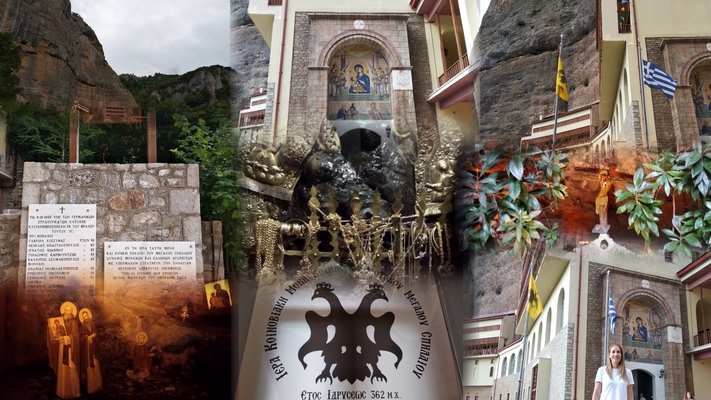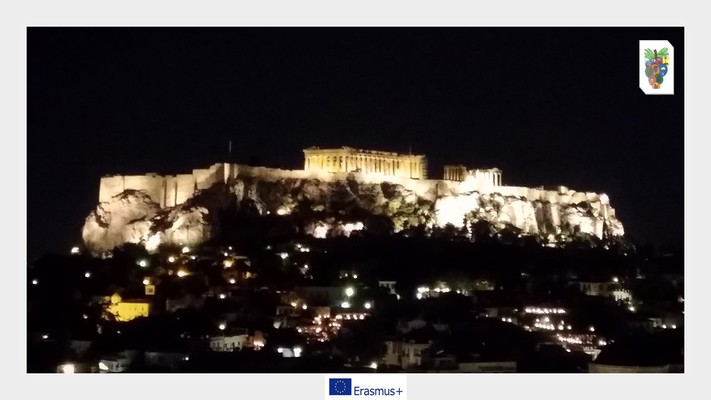
Wine in Greece
Greece is one of the oldest wine-producing regions in the world and among the first wine-producing territories in Europe. The earliest evidence of Greek wine has been dated to 6,500 years ago where wine was produced on a household or communal basis. In ancient times, as trade in wine became extensive, it was transported from end to end of the Mediterranean; Greek wine had especially high prestige in Italy under the Roman Empire. In the medieval period, wines exported from Crete, Monemvasia and other Greek ports fetched high prices in northern Europe.
The origins of wine-making in Greece go back 6,500 years and evidence suggesting wine production confirm that Greece is home to the second oldest known grape wine remnants discovered in the world and the world’s earliest evidence of crushed grapes. The spread of Greek civilization and their worship of Dionysus, the god of wine, spread Dionysian cults throughout the Mediterranean areas during the period of 1600 BC to the year 1. Hippocrates used wine for medicinal purposes and readily prescribed it. Greek wines and their varieties were well known and traded throughout the Mediterranean. The Ancient Greeks introduced vines such as Vitis vinifera and made wine in their numerous colonies in Italy, Sicily, southern France, and Spain. The Vitis vinifera grape which thrives in temperate climates near coastal areas with mild winters and dry summers adapted well and flourished in the Northern Mediterranean areas. The most reputable wines of ancient Greece were Chian, Coan, Corcyraean, Cretan, Euboean, Lesbian, Leucadian, Mendaean, Peparethan wine, Rhodian and Thasian. Wine was also important for ancient Macedonia. Two other names may or may not be regional: Bibline wine and Pramnian wine are named in the earliest Greek poetry, but without any reliable geographical details.
In 1937, a Wine Institute was established by the Ministry of Agriculture. During the 1960s, retsina suddenly became the national beverage. With rapidly growing tourism, retsina became associated worldwide with Greece and Greek wine. Greece’s first Cabernet Sauvignon vineyard was planted in 1963. In 1971 and 1972, legislation established appellation laws.
Source: [ wiki ]
Activity - Exploring, Filming, Documenting Tetramythos Winery
The winery building, impressive and tastfull, is in absolute harmony with the surrounding environment.
The inside of the building designed with attention to the smallest detail,remains fuctional and looks nothing like a factory.This is due to the wooden roof,the carved stones,the wood,and the farming tools lying around which were used in the past in grape growing and wine making.
Small stainless tanks connected to a central refrigeration system provide small scale wine making per variety and vineyard. The wine cellar with the oak barrels, brings back memories of the past.
The display of wine accessories gives us the chance to buy gifts for friends and ourselves,which will reinforce the pleasure of the wine.
Source: [Tetramythos]
Poster - Exploring, Filming, Documenting Tetramythos Winery
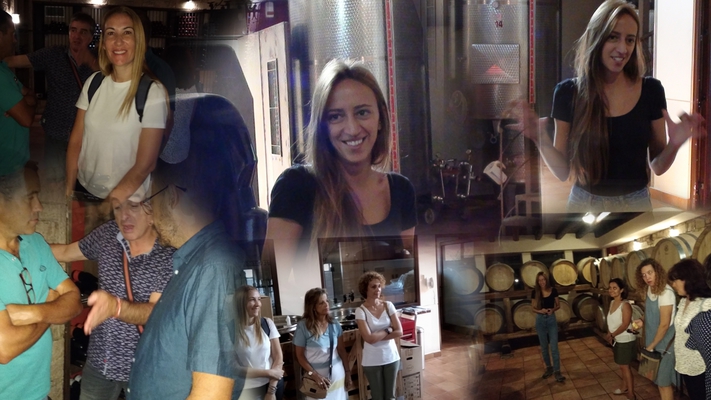
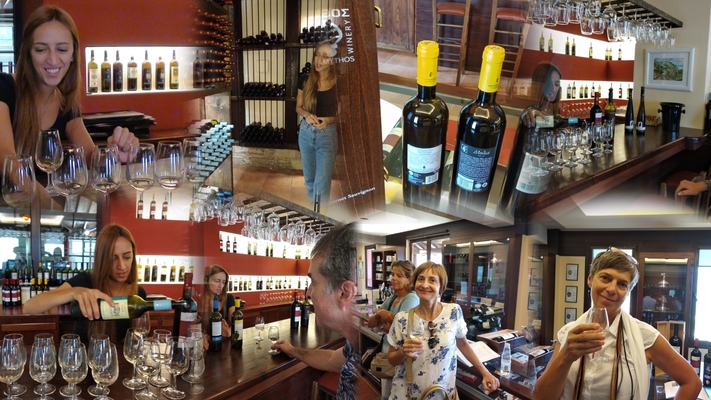
Activity - Exploring, Filming, Documenting the Historical Settlement of Kalavryta
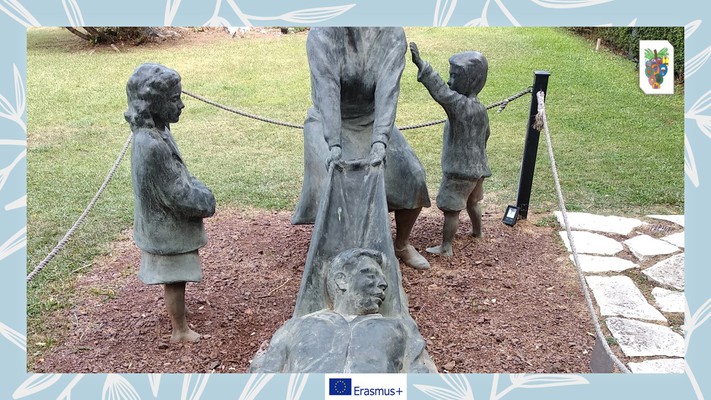
The Massacre of Kalavryta (Greek: Σφαγή των Καλαβρύτων), or the Holocaust of Kalavryta (Ολοκαύτωμα των Καλαβρύτων), refers to the near-extermination of the male population and the total destruction of the town of Kalavryta, Greece, by the 117th Jäger Division (Wehrmacht) during World War II, on 13 December 1943.
In early December 1943, the German Army's 117th Jäger Division began a mission named Unternehmen Kalavryta (Operation Kalavryta), intending to encircle Greek Resistance guerilla fighters in the mountainous area surrounding Kalavryta. During the operation, 78 German soldiers, who had been taken prisoner by the guerrillas in October, were executed by their captors. In response, the commander of the German division, General Karl von Le Suire personally ordered the "severest measures" — the killing of the male population of Kalavryta — on 10 December 1943.
Operation Kalavryta was mounted from six cities: Patras, Aigion, and Cornith on the Gulf of Corinth and from Argos, Pyrgos and Tripolis in central Peloponnese. All "Battle-Groups" were aimed at Kalavryta, although the divisions from Pyrgos, Argos, and Corinth returned to their bases soon after. Wehrmacht troops burnt villages and monasteries and shot civilians on their way. The Germans reached Kalavryta on December 9. In the early morning of December 13, 1943 the Germans rounded up all residents of the town and forced them into the school building where they separated the older boys and men from the women and children. They moved the men to a field owned by Thanasis Kappis, a school teacher, just overlooking the town. After looting the town and setting it ablaze, the Germans machine-gunned the men. 438 men and older boys were killed. There were only 13 male survivors, saved because they were hidden under the bodies of the dead. The women and children managed to free themselves from the flaming school while the rest of the town was set ablaze. The following day the Nazi troops burned down the Agia Lavra monastery, a landmark of the Greek War of Independence.
In total, 693 (actual memorials in Kalavrita and other villages name every one) civilians were killed during the reprisals of Operation Kalavryta. Twenty-eight communities—towns, villages, monasteries and settlements—were destroyed. In Kalavryta itself about 1,000 houses were looted and burned, and more than 2,000 livestock seized by the Germans.
Today the Place of Sacrifice is kept as a memorial site, and the events are commemorated every December. On 18 April 2000, then-President of the Federal Republic of Germany, Johannes Rau, visited Kalavryta and expressed shame and sorrow for the tragedy.
Source: [ wiki ]
Activity - Exploring, Filming, Documenting the Museum of the Kalavryta Holocaust
The Museum of the Kalavryta Holocaust is a museum in Kalavryta, Greece dedicated to the history of the Massacre of Kalavryta in 1943. The museum contains artifacts of the German occupation of the town and documents the massacre.
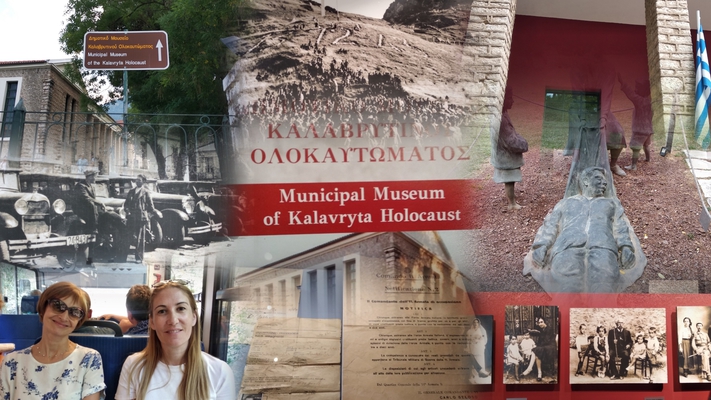
Activity - Exploring, Filming, Documenting the Monastery of Mega Spilaio
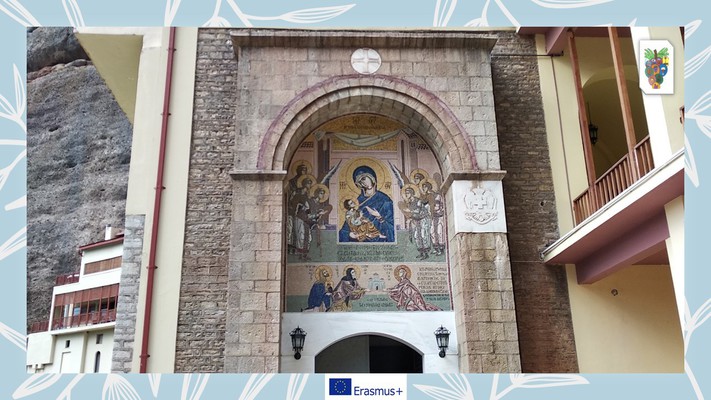
Mega Spilaio (Greek: Μέγα Σπήλαιο, lit. 'Great Cave'), formally the Monastery of the Dormition of the Theotokos (Ιερά Μονή Κοιμήσεως της Θεοτόκου), is a Greek Orthodox monastery near Kalavryta, in the Peloponnese peninsula in southern Greece.
The monastery is located in a large cave in a sheer cliff, where the western slopes of Mount Chelmos drop down to the gorge of the Vouraikos river, some 11 kilometres (6.8 mi) northwest of the town of Kalavryta. The cave was known in antiquity, and the geographer Pausanias reports that the daughters of Proetus found refuge there during their madness. In the first Christian centuries, Christian hermits occupied the cave.
According to tradition, the monastery is one of the oldest in Greece, reputedly founded in 362 by the Thessalonian brothers Symeon and Theodore, who with the help of Euphrosyne (a local shepherdess, honoured as saint for her part in these events) discovered in the cave the icon of the Theotokos painted by Luke the Evangelist.
Its medieval history under Byzantine and Latin rule is obscure. The monastery gained prominence only from about 1354, when it served as the residence of the Orthodox Metropolitan of Patras, since the city was still occupied by the Latins and the seat of a Latin archbishopric. The complex suffered large-scale destructions in 849, 1400, and 1640, when it was comprehensively rebuilt.
Several of the monks became members of the Filiki Etaireia and took part in the Greek War of Independence. In 1934, the katholikon was destroyed in a fire, and replaced by a new church in 1937. On 8 December 1943, the German 117th Jäger Division destroyed the monastery and executed 22 monks and visitors as part of reprisals that culminated a few days later with the Massacre of Kalavryta.
The monastery was rebuilt from the ground after the war, and now comprises an eight-storey complex set in the 120 metres (390 ft) high cliff face. A male monastery, it celebrates on 15 August (the day of the Dormition), 14 September, and 18 October (Luke the Evangelist and the ktetors).
Source: [ wiki ]
Poster - Exploring, Filming, Documenting the Monastery of Mega Spilaio
